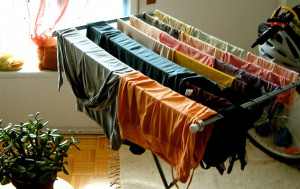Ariane Pailhe and Anne Solaz
research directors at INED answer our questions on the distribution of domestic tasks during periods of confinement.
(Interview conducted in January 2021)
Did France’s first lockdown period, which upset work and societal configurations, change domestic work-sharing within households?

The first lockdown generated additional domestic and parenting work. Cafeterias and restaurants were closed so there were more meals to prepare, and more housework because there were always people in the home. Since daycare and schools were closed, parents had to take care of children all day long and set up home schooling.
In this situation women contributed more than men. According to the EpiCov survey conducted by INSERM and the DREES in May 2020, over half of women aged 20 to 60 spent at least two hours daily on housework (18% spending over four hours), while the corresponding figure for men was only 28% (9% over four hours). Women also devoted more time to their children: 43% of mothers—but only 30% of fathers—spent over six hours per day on parenting.
Task distribution between partners remained sharply unequal during this first lockdown period. In one out of two couples, women spent more time on housework than their male partners; in only 7% of couples did the reverse obtain (that is, the man doing more than the woman. This type of task was equally shared in 42% of couples. Parenting tasks were shared somewhat more equally.
According to a child cohort survey (SAPRIS-ELFE/EPIPAGE-INED/INSERM) survey, lockdown changed the way half of parents with eight- or nine-year-old children divided up domestic and parenting tasks. More women increased their contribution than men: 28% compared to 22%. And children participated more.
You’ve shown that unequal partner sharing of domestic tasks increased intra-family conflicts. What other factors had an impact on quarreling and arguments?
13% of people belonging to a couple quarreled more than usual during the first lockdown. The amount of arguing increased with the degree of inequality in domestic work sharing.
Arguments occurred more frequently among people under 40 and among parents, especially those with a relatively high number of children. Housing conditions had an impact on conjugal relations: having an outside space was a calming factor while overcrowding generated conflicts. Changes in occupational activities due to lockdown did not play much of a role.
Were differences observed by whether respondents were on suspended employment and collecting unemployment, working from home, or continuing to work away from home?
Women working remotely spent less time on domestic tasks than women still working outside the home—a seemingly paradoxical finding explained by the fact that time spent at home depends heavily on the household’s social and financial situation. The fact is that the women working from home were much more likely to have high-skilled jobs, women who already spent relatively little time on housework.
Whatever their occupational activity or employment situation, women did more domestic work than their male partners. Task-sharing was less imbalanced in couples where both partners were working. But in households where the man was working outside the home rather than remotely, the women took on more domestic work, whereas domestic task sharing was not affected by whether the women was working from home or outside the home.
